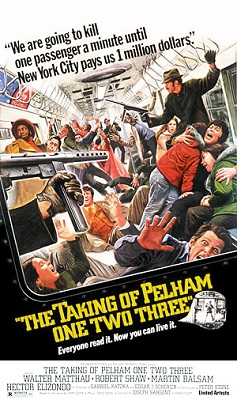
Terror in the tunnels has been the subject of many a horror movie, think Bradley Cooper navigating turnstiles in The Midnight Meat Train or Frank Zito on the prowl in Maniac, one of the best horror movies of the 80s.
While those efforts explored the empty creepiness of solo late night train travel, action thriller The Taking of Pelham One Two Three navigates the tensions in an already tense environment of the everyday New York City subway commute.
A 70s film through and through – in which the Big Apple looks decidedly bruised – this Joseph Sargent-directed thriller gives some of the grime and grunge you get from Death Wish, Taxi Driver, and The French Connection.
A delegation from The Tokyo Metropolitan Bureau of Transportation is in town for a tour to learn a thing or two from their MTA counterparts (and they certainly have in real-life: the Tokyo subway system is now superior to New York’s by every available metric, ridership, cleanliness, profitability, timeliness).
Walter Matthau as Lt Garber is giving them a tour, and he and his staff are condescending to the visitors – until the MTA team has to turn its attention to more pressing matters than to pressing palms: a train is not moving in one of the tunnels.
Turns out a group of hijackers led by the incomparable Robert Shaw (Jaws star), has commandeered a Bronx train (Pelham Bay, hence the film’s title) at 59th Street Station and is threatening to kill commuters if their demands aren’t met.
The Taking of Pelham One Two Three gives us colour coded character naming conventions, Mr. Blue, Mr. Green, etc. – which Quentin Tarantino paid homage to or ripped off, depending on your perspective, in Reservoir Dogs.
And it’s a colourful film metaphorically too in the form of cracking dialogue:
Mr. Blue: Be quiet! Now be quiet! Nothing will happen as long as you obey my orders.
Pimp: Shit, man that’s what they said in Vietnam, and I still got my ass shot full of lead.
This is a film that gives us on-point tough-talking – and acting – New Yorkers, and an unrelenting pace.
***3/4 (out of 5)
Check out the Really Awful Movies Podcast discussion of Pelham here.

